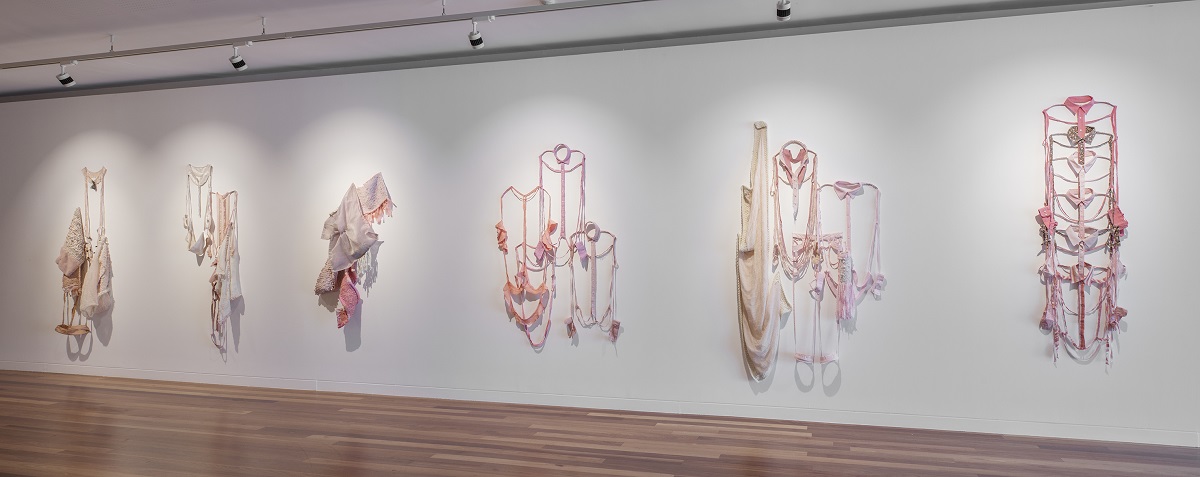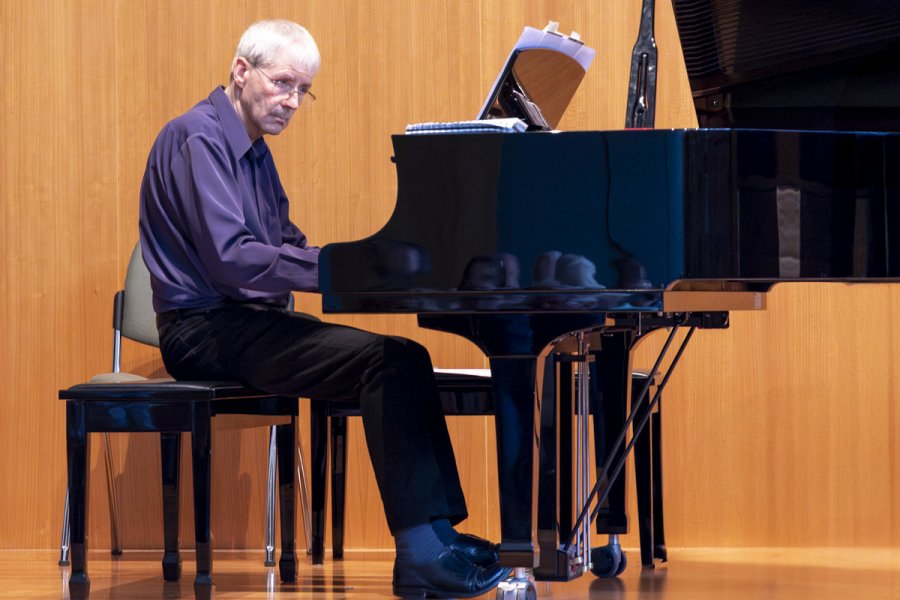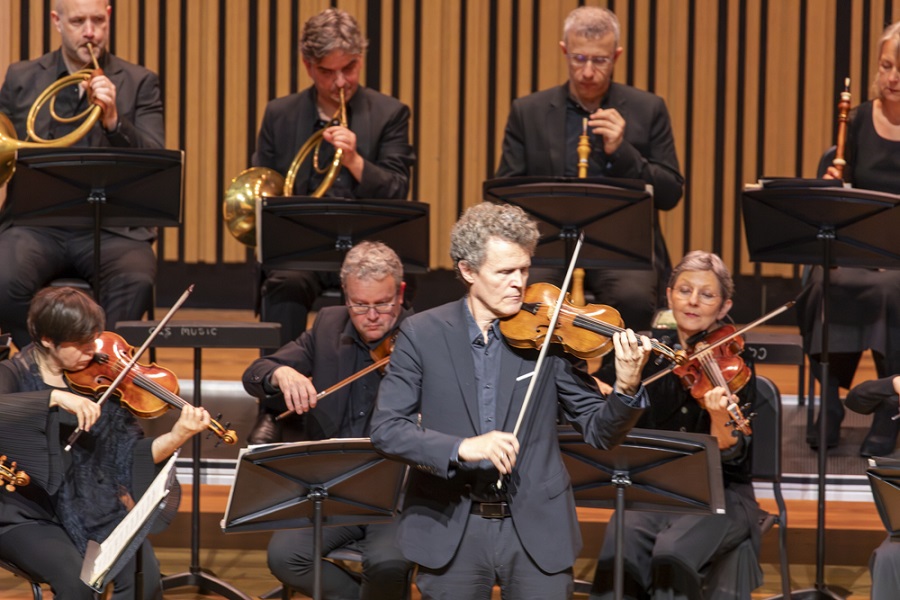
Craft / “Texture”. At Canberra Contemporary Art Space, Parkes, until April 1. Reviewed by MEREDITH HINCHLIFFE.
THIS exhibition includes local and interstate emerging and established artists who explore all that textiles can do and be.
Textiles, as an art material, are often overlooked, as they form such a part of our lives in many ways. Textile exhibitions come and go in popularity and perhaps this exhibition, in a contemporary art space, as distinct from a “craft” gallery indicates that they are on the rise.
Kate Just is an experienced artist from Victoria. Her exhibit consists of 65 knitted panels bearing the words “Anonymous was a woman”. The work is inspired by a quotation in Virginia Woolf’s “A Room of One’s Own” and these panels are a portion of the project that Just began in 2019.
The work on exhibit packs a punch, and should make all viewers consider the fact that in the 18th and 19th centuries many poems are signed “anonymous”. Women’s writing – similar to many walks of life – was disregarded, ignored, or considered of lesser value. There is no doubt that women might have signed “anonymous” as a way of escaping these farcical gender perceptions.
Nandeena Dixon is a multi-disciplinary artist who is recognised as an expert weaving practitioner within indigenous Australian textile traditions.
“Untitled” is handwoven coconut fibre string that runs from one end of a long wall to the other. It threads its way through objects the artist has made, including hoops, dilly bags, fish, and other indigenous symbology. The viewer’s eye is caught by a thick vine hoop wrapped in a colourful weaving – representing the eye of the Rainbow Serpent – which represents the centre of the work. This work is gentle and the artist generously shares the symbols with us.
ACT artist Alia Parker is showing “Multispecies Patchwork”, a result of her guiding mushroom mycelium growth across the fabrics used in the work. The use of fungi has recently become popular, and this work requires some contemplation, although I find it unresolved, and wonder why the artist has chosen to use patchwork techniques.

“Portraits of Care” by Jane Bodnaruk take important parts of clothes – collars, the front facings with buttons, cuffs, the waists and cuffs of pants: important as they finish the garment and often hold it together. These works refer to the act of caring. The bodies of the garments are made into cloths, representing signature actions of care. These are interesting works which stand on their own.
Haji Oh, from NSW, is exhibiting three woven pieces, which hang in space in the gallery. The warps are painted, hills are reflected in the water and the works are joined by linen strings – used as the warp. The colours are pale, almost faded, and refer to memories collected from workshop participants.
Since 2017 she has worked on a series called “grand-mother island project”, in which she traces the trajectories of people who have crossed the seas between Japan and South Korea to reach Australia. These enigmatic works are beautifully woven and carry deep meanings.
Chrys Zantis is showing a large and eye-catching installation of crocheted and knitted forms studded with fairy lights and held together with cable ties. They crawl across the floor and the wall. We are told they represent body tissues and conceptual landscapes of the human mind and the body.
The works in this exhibition could generally be referred to as conceptual. While they are all different, as a group it is a successful show.
Who can be trusted?
In a world of spin and confusion, there’s never been a more important time to support independent journalism in Canberra.
If you trust our work online and want to enforce the power of independent voices, I invite you to make a small contribution.
Every dollar of support is invested back into our journalism to help keep citynews.com.au strong and free.
Thank you,
Ian Meikle, editor








Leave a Reply